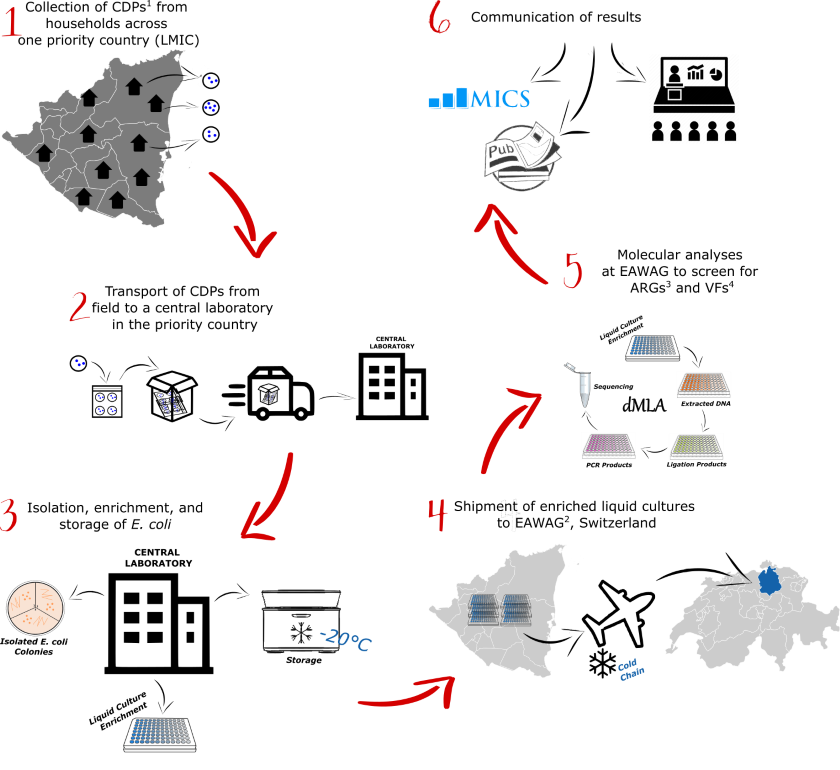Department Environmental Microbiology
Risk Factors for Pathogenic and Antimicrobial Resistant Escherichia coli in Drinking Water based on nationally representative Household-Level Survey.
The Sustainable Development Goals (SDGs) call for universal access globally to safe and affordable drinking water by 2030. As of 2020, an estimated 26% of the global population relies on drinking water sources that are not considered “safe”, based on the presence of the indicator bacteria E. coli. As a result, monitoring frameworks, like the Multiple Indicator Cluster Surveys (MICS), obtain vast collections on E. coli from drinking water across low/middle income countries (LMICs). These collections offer a data source responsive to the urgent need for surveillance and monitoring of diarrheal disease and antimicrobial resistance. Through surveillance, we can address a number of key knowledge gaps on prevalence rates, risk factors, and transmission of pathogenic and antimicrobial resistant E. coli.
The objectives of this study are to quantify prevalence rates, identify risk factors, and understand pathogenic and antibiotic resistant E. coli transmission in in a priority LMIC by leveraging nationally representative surveys of drinking water and a novel low-cost method for screening E. coli.
Specific objectives include determining:
- Prevalence rates of antibiotic resistant and pathogenic E. coli in a priority LMIC using drinking water samples from MICS as a sentinel surveillance system,
- Risk factors for E. coli, including antibiotic resistant and pathogenic E. coli, in drinking water by linking household-level survey data to collected microbial data, and
- Transmission of E. coli pathotypes using phylodynamics.

Funding
Swiss National Science Foundation


